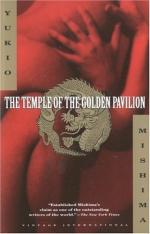|
This section contains 10,392 words (approx. 35 pages at 300 words per page) |

|
SOURCE: Washburn, Dennis. “Structures of Emptiness: Kitsch, Nihilism, and the Inauthentic in Mishima's Aesthetics.” In Studies in Modern Japanese Literature: Essays and Translations in Honor of Edwin McClellan, edited by Dennis Washburn and Alan Tansman, pp. 283-306. Ann Arbor, Mich.: Center for Japanese Studies, The University of Michigan, 1997.
In the following essay, Washburn discusses the paradoxes of modernism evident in Mishima's works and life.
Charles Jencks, in a famously acerbic account of recent developments in architectural style, has asserted that “Happily, we can date the death of modern architecture to a precise moment in time,” which he claims was “July 15, 1972 at 3:32 p.m. (or thereabouts).”1 At that moment, several blocks of the Pruitt-Igoe housing complex in St. Louis, Missouri, which had been built from an award-winning design based on the ideals of the Congress of International Modern Architects, were dynamited. Hailed at the time of its construction as...
|
This section contains 10,392 words (approx. 35 pages at 300 words per page) |

|


